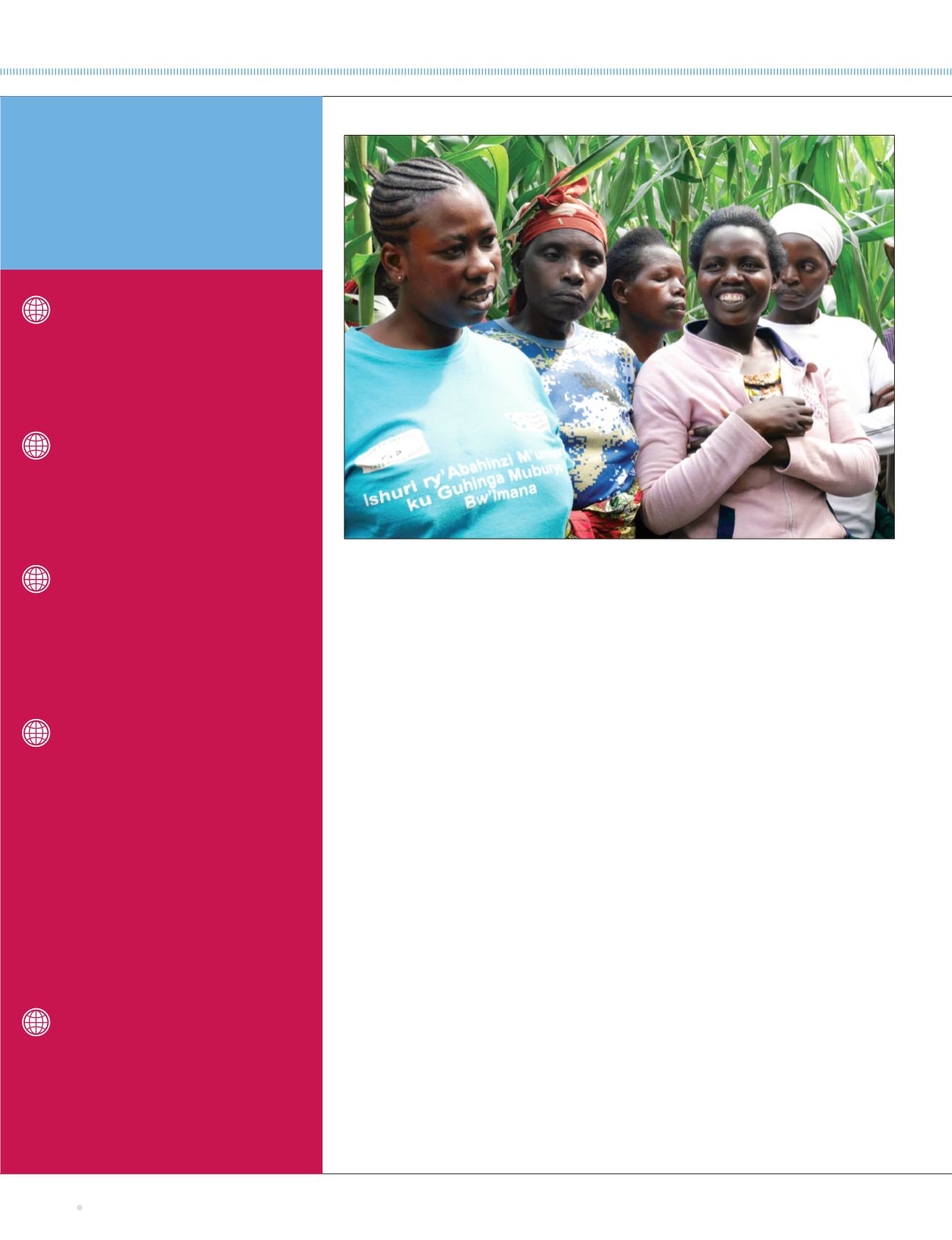

The Food Issue
2017
Grains
West
32
their approach to farming was random
and unfocused. Since then, they’ve made
significant improvements.
“We used to just till the land, not
take care of the soils, and used to grow
without measurement, just random
plant space,” Nzayisenga said through
an interpreter. “Now we measure and
use proper fertilizer rations, we learned
about crop rotation.”
For Jeninga, meeting the members
of the farmer field school in Ndego
was a great example of how the CFGB
money is helping farmers around the
world. What might seem like common
agricultural practices to farmers in
developed nations can often be small,
yet critical, teachings that bring valuable
skills to the fields of subsistence farmers
in other countries.
“When you look at the kind of stuff
being done on a small scale, you can
see that what we’re doing is making a
difference,” Jeninga said. “This confirms it.”
Solidifying that confirmation was a
neighbouring farmer who stood on the
fringes of the farm tour and listened
to the farmer field school participants
answering questions, then jumped into
CANADIAN
FOODGRAINS BANK
BY THE NUMBERS
the conversation. Even though he wasn’t
a participant in the learning program,
he said he started asking the farmers
questions when he saw their successful
crops and implemented similar practices
on his plot. Now, he said, smiling, his
maize looks better than that of the field
school participants.
Terence Barg, the CFGB’s northern
Alberta representative, was also
in Rwanda and has witnessed the
organization’s impact in other countries.
Each time he sees the CFGB’s work in
action, the experience is affirming,
he said.
“It’s always rewarding to see the
success of projects,” Barg said. “It’s
amazing to see how much of a difference
it makes in these people’s lives in these
areas where it’s very dry.”
HONOURING THE PAST, EMBRACING
THE FUTURE
When most of us think of Rwanda,
agriculture isn’t typically the first image
that springs to mind.
Instead, our thoughts probably jump to
the 1994 Rwanda genocide, when racial
tensions boiled over and Hutu extremists
Odette Nzayisenga (left), president of the Farmer Field School in Rwanda’s Ndego sector, talks about the conserva-
tion agriculture practices she’s learned through a program funded in part by the Canadian Foodgrains Bank.
According to the Canadian
Foodgrains Bank’s (CFGB) annual
report, in 2015/16, it provided $43
million of assistance for more than
one million people in 40 countries
through 133 unique projects.
Donations over the same time
period reached $11.3 million, while
member agencies contributed
another $4.8 million. Land
donations reached a value of
$755,236.
Donations came from individuals,
church congregations,
companies and 268 growing and
community projects, where crops
are grown, cared for, harvested
and sold, with the profits donated
back to the CFGB.
Global Affairs Canada funding
totalling $32.5 million is also
recorded as income by the
CFGB for 2015/16. According
to the CFGB’s annual report, it
received three grants from the
department: a five-year core grant
signed in 2011, a special grant for
aid to displaced Syrians within
their own country and a multi-
year, $14-million conservation
agriculture grant. A further
$480,000 was received from the
Bill & Melinda Gates Foundation.
In terms of expenses, the CFGB
spent $47 million on international
program activities to provide
and distribute food, and support
agriculture livelihood and nutrition
programs.









